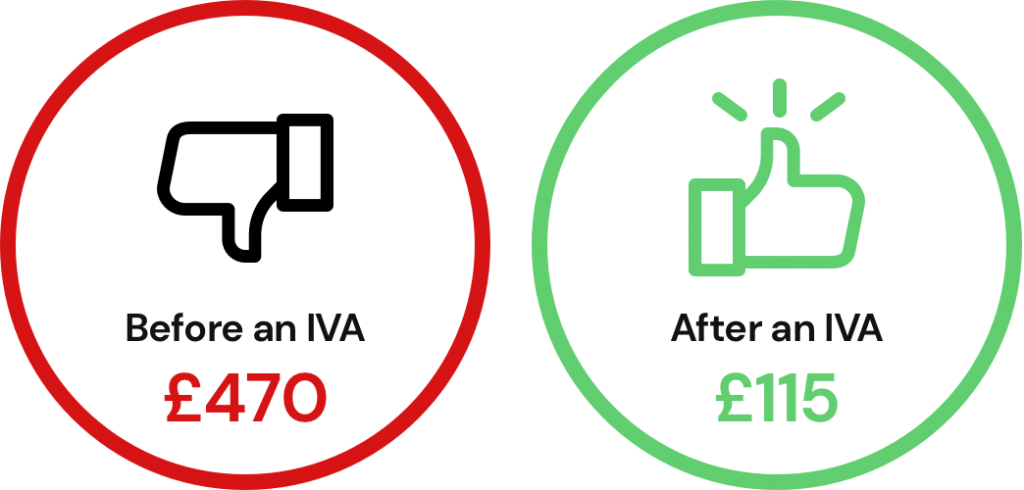Fed up with Debt?
We can help bring the smiles back. Learn how an IVA can help clear your debt
Here are four debt solutions that could help you out of debt.
Which debts are worrying you?
Here's an example of how an IVA can help
Imagine you have the following debts:
Loan 1 |
£11,152 |
Loan 2 |
£2,226 |
Loan 3 |
£302 |
Credit card 1 |
£2,395 |
Credit card 2 |
£648 |
Council Tax |
£172 |
Payday loan |
£1,408 |
Total amount owed: |
£18,303 |
Customer repayments before & after an IVA

Reduced by 80%
* monthly payments are based on individual financial circumstances
Limitations
Dissolve Debt Ltd
Paul House, Stockport Rd, Timperley, Cheshire, WA15 7UQ
Paul House, Stockport Rd, Timperley, Cheshire, WA15 7UQ
Registered in England and Wales 5278758
Data Protection Registration No Z896984X
Dissolve Debt Ltd is authorised and regulated by the Financial Conduct Authority (FCA, firm reference number 662423).
Calls are recorded for training and quality purposes. Calls to 0161 numbers from mobiles and landlines are charged at local rate. Please check with your network provider for details on your call package.
This is a guide from GOV.UK with options for paying off your debts as recommended by the Money Helper.
Our opening hours
Monday to Thursday: 08:00 – 19:00
Friday: 08:00 – 16:00
Call: 0161 926 7670




